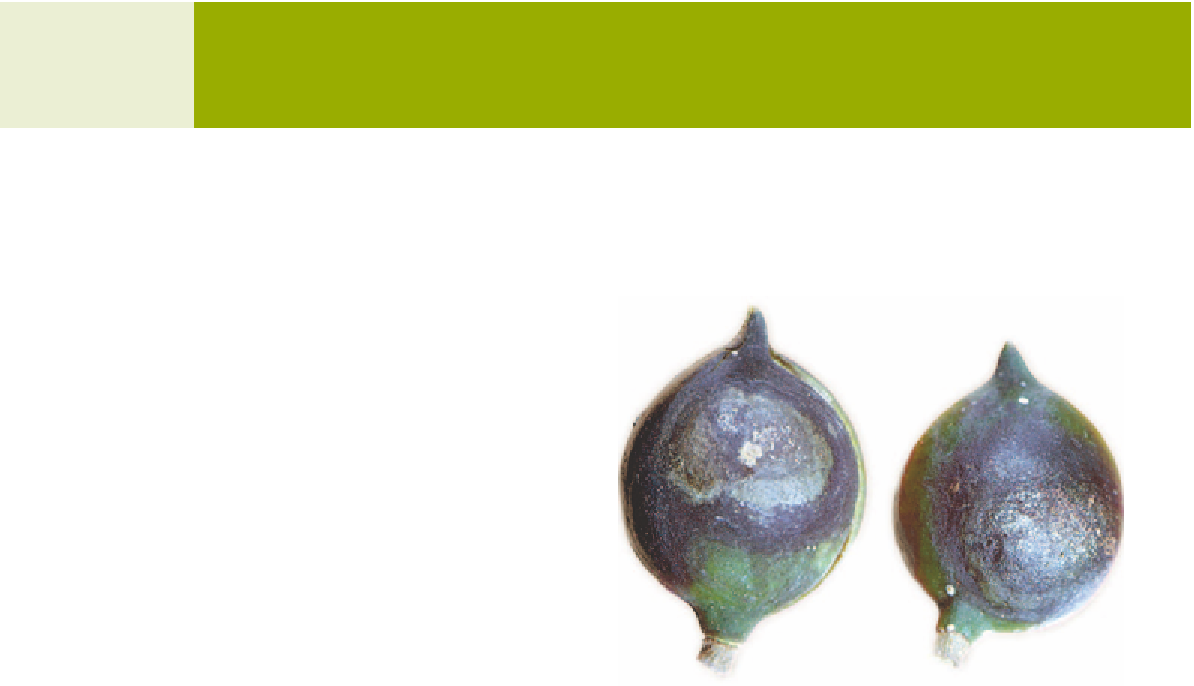Agriculture Reference
In-Depth Information
11
MACADAMIA
(
Macadamia integrifolia
and
M. tetraphylla
)
T h e e d i b l e m a c a d a m i a ( P r o t e a c e a e ) i is a n i n d i g e n o u is
rainforest tree species of Australia, originating from
forest fringes of coastal south-east Queensland and
northeast New South Wales. Ten macadamia species exist
worldwide; five in Australia, three in New Caledonia,
one in Sulawesi and one in Madagascar. Only two species
are edible: the smooth-shelled
Macadamia integrifolia
,
and the rough-shelled
M. tetraphylla
. However, it is
the selections of
M
.
integrifolia
and its hybrids with
M. tetraphylla
that form the basis of the commercial
industry. Not only are the nuts of the macadamia
considered the world's finest dessert nut but within just a
few decades, macadamia has become the only indigenous
Australian plant species to become a large-scale
commercial food crop, worth in excess of $100 million
annually.
Fig 11.1 Anthracnose sporing on macadamia husk.
Australia is the largest macadamia producer in the
world, producing more than 30 000 tonnes of
nut-in-shell annually, which is approximately 50%
more than the next largest producer, Hawaii. More than
four million macadamia trees are planted in Australia,
in regions spanning from the mid-north coast of
New South Wales to the Atherton Tablelands in north
Queensland. However, the bulk of production (more
than 50%) comes from the Northern Rivers region
of New South Wales.
turn from brown to an ashen grey, but the enclosed
kernel is not affected. Anthracnose often occurs
simultaneously on husk tissue infected with other fungi
such as
Phomopsis
sp.,
Pestalotiopsis
sp. and
Lasiodiplodia
theobromae
.
Source of infection and spread
Spores produced on dead leaves, twigs and branches may
be spread by splashing water.
FUNGI
Importance
Yield loss due to anthracnose may occur through
premature fruit abscission, although significant economic
loss is rare.
ANTHRACNOSE
■
Cause
The fungus
Colletotrichum gloeosporioides
.
Management
•
Reduce disease severity by avoiding tree stress and
wounding of mature fruits.
Symptoms
Symptoms include diffuse black spots up to 10 mm in
diameter, preceding a greasy decay of the entire husk of
fruits on the ground, or senescent mature fruit that fail
to abscise on the tree. Shells within infected husks can
Practise good insect control.
•
Remove sources of inoculum, such as dead and dying
limbs, from the tree canopy.
•












